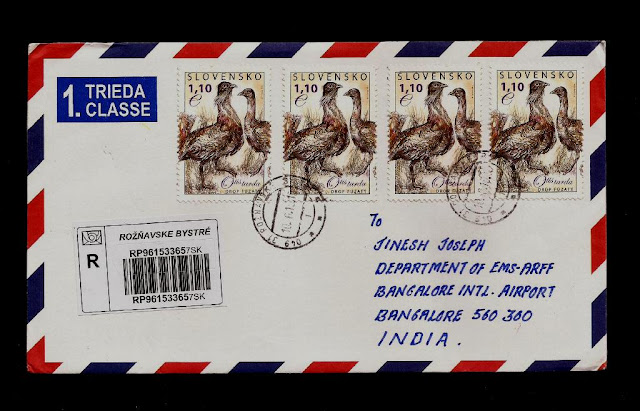Slovakia (Slovak: Slovensko),
officially the Slovak Republic (Slovak: Slovenská republika), is a
landlocked country in Central Europe. It is
bordered by Poland to the north, Ukraine to the east, Hungary to the south, Austria to the southwest, and the Czech Republic to the northwest. Slovakia's territory spans
about 49,000 square kilometres (19,000 sq mi) and is mostly
mountainous. The population is over 5.6 million and consists mostly of ethnic Slovaks. The capital and largest city is Bratislava, and the second-largest city is Košice. The official language is Slovak.
The Slavs
arrived in the territory of present-day Slovakia in the 5th and 6th centuries.
In the 7th century they played a significant role in the creation of Samo's Empire and in the 9th century established the Principality of Nitra,
which was later conquered by the Principality of Moravia to
establish Great Moravia. In the 10th century, after
the dissolution of Great Moravia, the territory was
integrated into the Principality of Hungary,
which would become the Kingdom of Hungary in 1000.
In 1241 and 1242, much of the territory was destroyed by the Mongols during their invasion of Central and Eastern
Europe. The area was recovered largely thanks to Béla IV of Hungary who
also settled Germans who became an
important ethnic group in the area, especially in what are today parts of central and eastern Slovakia. After World War I and the dissolution of the Austro-Hungarian Empire,
the Czechoslovak National Council established Czechoslovakia (1918–1939). A separate (First) Slovak Republic (1939–1945)
existed during World War II as a totalitarian, clero-fascist one-party client state of Nazi Germany. At the end of World War II, Czechoslovakia was
re-established as an independent country. After a coup in 1948
Czechoslovakia became a totalitarian one-party socialist state under a communist
administration, during which the country was part of the Soviet-led Eastern Bloc. Attempts to liberalize communism
in Czechoslovakia culminated in the Prague Spring, which was crushed by the Warsaw Pact
invasion of Czechoslovakia in August 1968. In 1989, the Velvet Revolution ended the Communist rule in Czechoslovakia
peacefully. Slovakia became an independent state on 1 January 1993 after the
peaceful dissolution of Czechoslovakia,
sometimes known as the Velvet Divorce.
Slovakia is the world's largest per-capita
car producer with a total of 1,110,000 cars manufactured in the country in 2019
alone and the 5th largest car
producer in the European Union, representing 43% of Slovakia's total
industrial output.
The biodiversity of
Slovakia comprises animals (such as annelids, arthropods, molluscs, nematodes and
vertebrates), fungi (Ascomycota, Basidiomycota, Chytridiomycota, Glomeromycota and Zygomycota), micro-organisms (including Mycetozoa), and plants. The geographical position of Slovakia
determines the richness of the diversity of fauna and flora. More than 11,000
plant species have been described throughout its territory, nearly 29,000
animal species and over 1,000 species of protozoa. Endemic biodiversity is also common.
Slovakia is located in the
biome of temperate
broadleaf and mixed forests. As the altitude changes, the vegetation
associations and animal communities are forming height levels (oak, beech,
spruce, scrub pine, alpine meadows and subsoil). Forests cover 44% of the territory of Slovakia. In
terms of forest stands, 60% are broadleaf trees and 40% are coniferous trees. The occurrence of animal species is strongly
connected to the appropriate types of plant associations and biotopes.
Before 1918, the territory of modern Slovakia
was part of the Kingdom of
Hungary within the Austro-Hungarian Empire.
Stamps of the Kingdom of Hungary were in use. After World War I and the
dissolution of the Austro-Hungarian Empire, Slovakia and the regions of Bohemia, Moravia, and Carpathian Ruthenia formed
the Czechoslovak Republic.
From 1918 to 1939, stamps of the Czechoslovak Republic inscribed either Česko-Slovensko
or Československo were used in Slovakia. Between 1939 and 1945, the Slovak Republic, a client state of Nazi Germany, issued stamps inscribed Slovensko. After World
War II, Slovakia was again part of the re-established Czechoslovakia from 1945 to 1992. Czechoslovakian stamps
inscribed Československo were used during that time. From 1 January 1993,
Slovakia became independent after splitting from the Czech Republic and stamps were issued from that date inscribed
Slovensko. Stamps of the former Czechoslovakia continued to be valid until 30
September 1993.
The cover posted on June 10, 2015, and received on June 20, 2015.
The covers posted on May 12, 2014 and I received on May 26, 2014.
The covers posted on May 12, 2014 and I received on May 26, 2014.







No comments:
Post a Comment
Note: only a member of this blog may post a comment.